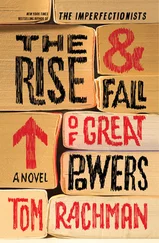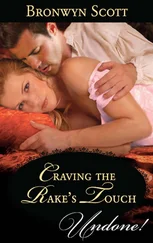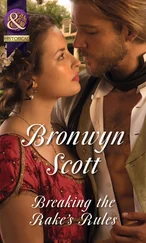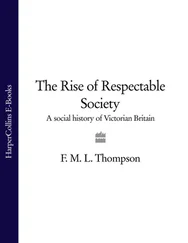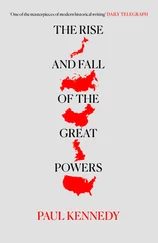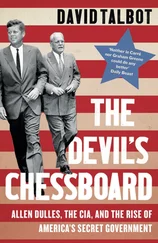The most powerful instrument of Henry’s intensely personal style of government was the royal council – or rather an inner ring of councillors, grouped into committees, who owed their influence entirely to the king and who worked under his supervision. One of these committees – the ‘Council Learned in the Law’ – was set up specifically to enforce the king’s prerogative rights, and was widely feared for its power to summon anyone, at will, on unspecified charges. Henry had no time for the traditional notion that noblemen of ancient lineage were the monarch’s natural advisers, his ‘born councillors’. His council was dominated by lawyers, royal dependants ‘and such other caitifs and villains of [low] birth’. 27His two most prominent councillors by the end of his reign were Edmund Dudley and his fellow lawyer Sir Richard Empson. These were Henry’s most notorious henchmen, ‘whom the people esteemed as his horse-leeches [bloodsuckers] and shearers … both like tame hawks for their master, and like wild hawks for themselves, insomuch as they grew to great riches and substance’. 28Empson and Dudley came to symbolise the rapacious and intrusive character of royal government during Henry’s final years.
As a lawyer from a prominent London family, the future lord chancellor and Catholic martyr Thomas More (1478–1535) was all too familiar with the inquisitorial practices of Empson, Dudley, and the Council Learned in the Law. If he had any particular monarch in mind when exploring the themes of royal misgovernment and aggrandisement of power in his early works it was surely Henry VII. His great critique of European society, Utopia , published just a few years after Henry’s death, describes an imaginary land where the office of king is elective and where the ruler can be deposed for ‘suspicion of tyranny’. More was one of the first English writers, though by no means the last, to use classical republican texts and arguments about popular sovereignty to criticise the swelling power of Renaissance monarchy.
The ruthless legalism of Henry’s kingship was matched by its financial efficiency. In a novel departure from his predecessors, Henry merged his private sources of income, those belonging to the crown, and national taxation into one consolidated (though physically dispersed) treasury, administered mainly from a department of his household, the Chamber, and subject to close royal scrutiny. This chamber system of finance concentrated large amounts of cash in the king’s hands – a good deal of which he secretly stockpiled in the Tower and other places – giving him unprecedented political independence, and excluding all but his inner entourage from understanding the true extent of the crown’s wealth. In a similar spirit, Henry created a new inner space within the royal household, the privy (or private) chamber, staffed by a corps of hand-picked servants – mostly men of relatively low social status – who alone had access to him during his private hours. The privy chamber, like Henry’s specialised council committees, or the royal bodyguard he formed against possible assassination, put further distance between the king and the political community – thus imitating, probably consciously, features of the French and Breton courts where he had spent his formative years. His lavish building projects served the same purpose as his innovations at court: to invest Tudor monarchy with a godlike majesty. Nothing spoke more tellingly of this aspiration than the magnificent chapel in Henry’s Thameside palace at Richmond, which was apparently unique in England in having the royal closet, or private pew, placed not at the west end, but to one side of the nave, closer to the altar (probably in deliberate emulation of chapel usage at the court of the dukes of Burgundy). 29Royal appropriation of sacred space was equally striking in Henry’s contribution to the completion of King’s College Chapel, Cambridge, with its antechapel made over not to Christian iconography but to massive displays of Tudor heraldic badges and royal arms.
As Henry’s health began to deteriorate from the late 1490s, so his obsession with ‘treasure’ and the control it supposedly conferred grew even stronger. To the victims of his ever-expanding system of financial penalties, it must have seemed that he had succumbed in his declining years to greed, pure and simple. Yet the lavish burial chapel that he commissioned to be built at the east end of Westminster Abbey, at a cost during his lifetime of £34,000, reveals a king who was still willing to spend liberally on affirming his inherited and divine right to rule. The time and money he invested in securing the Tudor dynasty would prove to have been well spent, for when he died in ‘grete agony of body & soule’ on 21 April 1509, no one challenged the succession of his son, Prince Henry. In his sermon at Henry VII’s funeral in St Paul’s Cathedral, John Fisher, bishop of Rochester, listed among the late king’s worldly accomplishments his success in making Tudor authority ‘dredde every where, not onely with in his realme but without also, his people were to hym in as humble subgeccyon as ever they were to kynge’. 30
The morning after Henry VII’s death, Dudley and Empson were arrested and sent to the Tower. The following year, in response to public pressure, the young Henry VIII would have the two men tried and convicted on trumped-up treason charges, and then beheaded. The kingdom had rid itself of these ‘horse-leeches’, to be sure, but the political conditions that had given rise to an Empson and a Dudley remained. Permanently in need of cash, and in ever-increasing quantities, the crown was dependent for its long-term financial health upon an unwieldy and sometimes fickle institution: Parliament. Resorting instead to prerogative taxation was always an option, but only in emergencies, and even then it ran the strong risk of alienating the political community. The partnership between crown and subject that had formed under the Plantagenets had thus become a love–hate relationship for the Tudors. It helped them govern and yet hindered them financially. Strong monarchs though they were, neither Henry VII, Henry VIII nor Elizabeth I proved capable of putting royal finances on a fundamentally new and less consensual footing. The kingdom’s fiscal system would remain fossilised in its medieval form until the mid-seventeenth century.
Such a king as never before
Of all the prosperous Londoners who had felt the lash of Henry VII’s greed and distrust, perhaps the most articulate was Thomas More. It was with relief, therefore, as well as joy that More wrote his 1509 Coronation Ode of King Henry VIII : ‘What wonder, then, if England rejoices in a fashion heretofore unknown, since she has such a king as she never had before?’ 31With hindsight, of course, More’s words are full of irony. For when Henry VIII did finally prove himself such a king as never before, by breaking with Rome, More and many others were very far from rejoicing. But in 1509 there was no hint of the storm to come. Indeed, for the first fifteen or so years of his reign the young king made no radical break with his father’s reign, let alone with Catholic Christendom. What was new and dazzling about Henry VIII was his larger-than-life personality and glamorous style of kingship. Optimism abounded at his accession, partly because the people were thoroughly sick of his father, but also because the eighteen-year-old Henry VIII cut such a dashing and graceful figure. When the date of his coronation was announced ‘a vast multitude of persons at once hurried to London to see their monarch in the full bloom of his youth and high birth … everybody loved him’. At six feet two inches tall, with a 32-inch waist, the young Henry seemed, in the words of the Venetian ambassador,
Читать дальше

